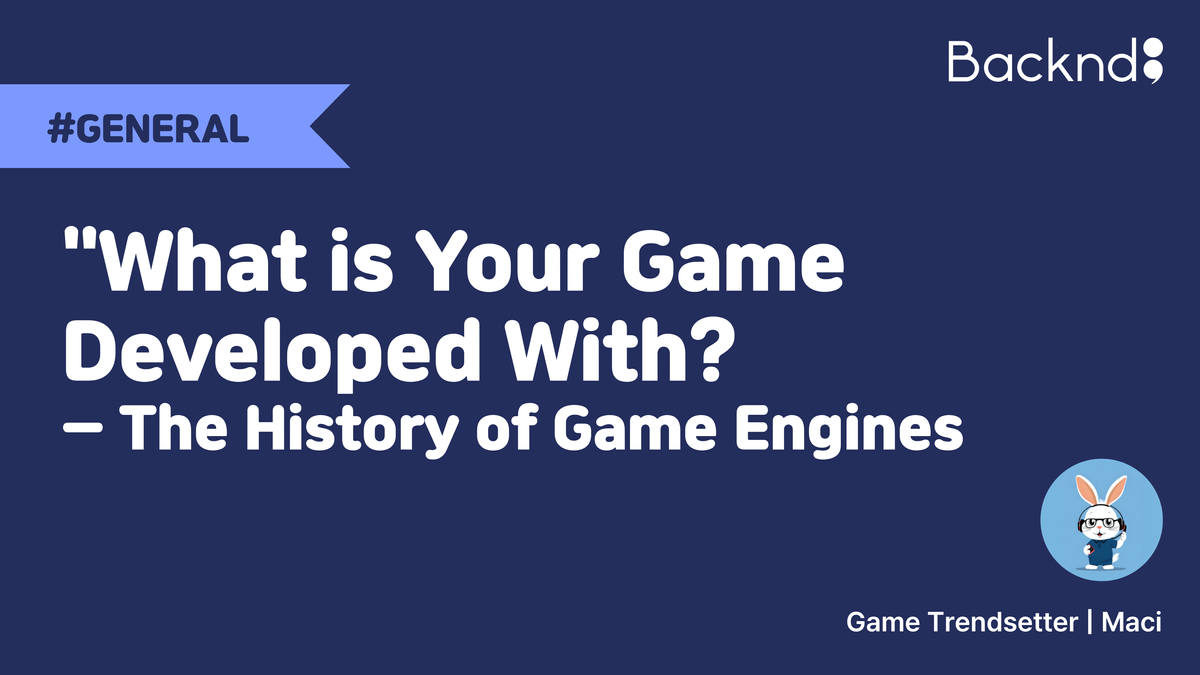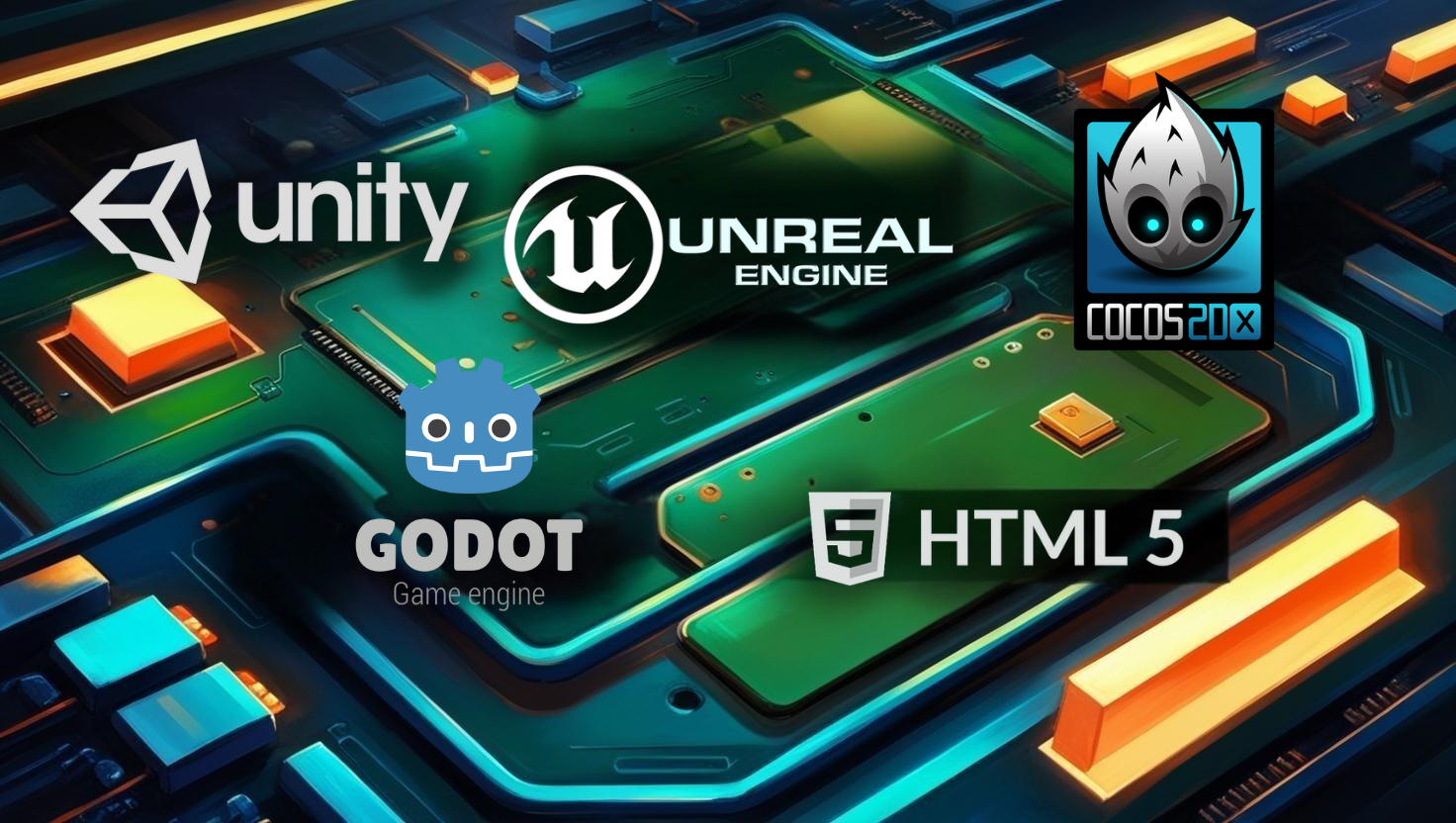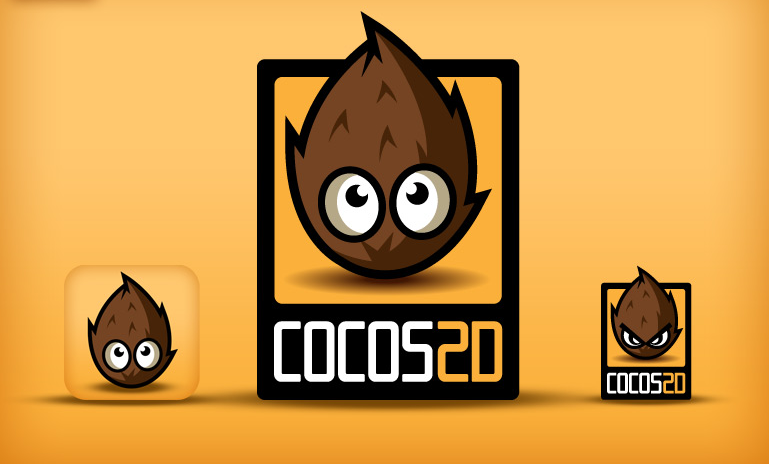"What is Your Game Developed With?" – The History of Game Engines

Written by Game Trendsetter Maci, 4 April 2025
🕒 What is your game developed with?
You have 3 seconds. 3, 2, 1...
90% of the developers I’ve met would answer Unreal Engine or Unity. Occasionally, I hear Cocos2d, Godot, or HTML5 as well, and these responses have been increasing recently.
But how did developers respond before game engines existed?
Today, let’s explore how game engines became commercialized and how developers' answers regarding game engines have evolved over time.

How Were Games Developed Before Commercial Game Engines?
[1980s to Early 1990s: The Era Before Game Engines]
In the 1980s, the concept of a "game engine" was not well established.
Hardware performance was far inferior to today, and game development methods varied significantly across platforms (PC, console, arcade, 8-bit & 16-bit computers).
How would a developer have responded to the question,
"What is your game developed with?" in this era?
Quiz Answer:
"I coded in C and used OpenGL."
"I wrote everything in assembly language."

Since there was no concept of a game engine, developers typically explained their development stack as a combination of a programming language, graphics technology, and platform.
With the advent of commercial engines, even the way we ask questions has changed.
During this time, hardware limitations and development environments meant that optimization was more critical than it is today. To implement a game, manually writing code was essential.
Developers had to code graphics at the pixel level to display them on the screen.
In 2D games, they had to build sprite and tilemap systems from scratch.
For 3D games, a notable example from this era is Wolfenstein 3D (1992),
which used ray casting technology to manually create a semi-3D graphical representation.
Wolfenstein 3D (1992) was first released on DOS and later adapted for platforms such as arcade machines, PC-98, and Atari. It is widely regarded as the first FPS game, and it utilized ray casting to manually create a semi-3D environment. (This remains a debated topic, so it cannot be definitively classified as a game engine. However, it is undoubtedly one of the early milestones that paved the way for modern game engines.)

Additionally, since there were no dedicated physics engines at the time, developers had to manually calculate wall collisions and object bounces using mathematical formulas. It’s astonishing to think that developers of that era were essentially walking supercomputers. OMG.
The First Game Engine? – The Rise of Doom Engine (id Tech 1) in the Mid-1990s
The term "engine" was not yet widely used, but even during this era, early game engines existed.
The Doom Engine (also known as id Tech 1) was first used in 1993. Initially, it was not a general-purpose commercial engine—it was highly specific and lacked flexibility in its source code. However, many engines, including Unreal and Quake Engine, later evolved from id Tech.
By the mid-to-late 1990s, the use of custom-built engines became increasingly common among developers.
How did developers answer the question,
"What is your game developed with?" in this era?
Quiz Answer:
"We use our custom-built engine."
"We built it on id Tech 1 (Doom Engine)."

The Birth and Commercialization of Unreal Engine
In 1998, Epic MegaGames (now Epic Games) launched the FPS game Unreal. The engine used for this game was Unreal Engine 1.

Unreal Engine 1 was initially developed as a tool to create the game "Unreal", not with the intention of being sold as a game engine from the start. In fact, at that time, the first game engine to achieve commercial success was the Quake Engine (id Tech 2), which was derived from id Tech.
John Carmack, a brilliant programmer specializing in 3D graphics and engine development, played a crucial role in this shift. As Doom and Quake became massive hits, the Quake Engine itself gained significant recognition in the industry for its technical capabilities.
Eventually, this led to its commercialization, creating an additional revenue stream for id Software.
Epic was also inspired by this and began considering a business model to provide its engine to other developers.
Here, my own speculation comes into play. Looking at the historical context:
1️⃣ Unreal was a long-term project that required a significant development period and high production costs.
2️⃣ By the late 1990s, the 3D game development boom had begun, and many studios needed a high-quality 3D engine.
3️⃣ However, building a high-quality 3D engine from scratch was both technically challenging and extremely expensive.
4️⃣ Compared to the Quake Engine, Unreal Engine 1 had superior lighting and color rendering capabilities. Additionally, it included the Unreal Editor, which provided a strong technical advantage.
Regardless of these factors, I believe the biggest influence on Epic's decision was id Software's successful engine licensing business model—which likely served as both inspiration and motivation.
Ultimately, Epic Games fully embraced a commercialization strategy starting with Unreal Engine 2. Following this shift, numerous AAA games adopted Unreal Engine 2, including Brothers in Arms: Road to Hill 30 and Lineage II. This decision laid the foundation for Unreal Engine’s continuous evolution, leading all the way to Unreal Engine 5, which remains a dominant force in the industry today.
2008 and Beyond: The Mobile Era and the Rise of Cocos2D

In 2007, the iPhone revolutionized the smartphone industry, and after 2008, the App Store became widely popular, fundamentally changing the landscape of the gaming market. Until then, PC and console development dominated the industry, but the mobile gaming market experienced explosive growth. As a result of this shift, the demand for lightweight and highly optimized 2D game engines increased significantly.
Unreal Engine had certain limitations at the time. Its expensive licensing fees meant that it was primarily used by AAA game studios. Additionally, because Unreal was originally designed with complex features, it was too heavy for developing simple 2D games. In contrast, Cocos2D, which was introduced in 2008, was lightweight, open-source (free), and perfectly suited for the emerging mobile gaming market. As a result, it became a widely used engine among indie mobile game developers.
Additionally, Cocos2D was originally written in Python, but to support various platforms and programming languages, it underwent multiple porting and binding processes. This led to versions such as: Cocos2d-Android, Cocos2d-x (C++ version), Cocos2d-HTML5. Even today, Cocos2D continues to be customized in various ways, remaining a beloved choice among developers.
Unity's Rise: The Democratization of Game Engines

However, personally, when I think of the smartphone era, the first engine that comes to mind is not Cocos2D, but Unity. (Sorry, Cocos2D!)
The Unity Engine, which was born in 2005, was not originally intended as a game engine. It was initially developed as a 3D web media creation tool, aiming to compete with Adobe Flash.
However, Unity had two key advantages:
1️⃣ It was significantly cheaper than Unreal Engine.
2️⃣ It was incredibly easy to use, even for developers with little experience in game development.
As a result, more and more developers started using Unity to create games—and just like that, Unity transformed into a full-fledged game engine.
In 2007, Unity released a major upgrade, significantly enhancing its 3D capabilities. Following the launch of the Apple App Store in 2008, Unity added iOS support, enabling developers to easily create and release games on the mobile market. This marked a turning point, making Unity one of the most accessible and widely used engines for mobile game development.
In 2010, Unity expanded its support beyond Apple devices to include Android, leading to an explosion of mobile games developed with Unity. Furthermore, in 2015, Unity introduced a free personal version, making it even more accessible to developers. This move firmly established Unity as the go-to engine for indie and mobile game developers, solidifying its dominance in the market.
One of Unity’s biggest advantages is its multi-platform support. With the press of a button, developers can build their games for a wide range of platforms, including: Web browsers, Windows, Mac, Linux, iOS, Android, BlackBerry, Windows Store apps, Windows Phone, Xbox 360, Xbox One, PlayStation 3, PlayStation 4, PS Vita, and Wii U. Although Unity gained widespread recognition slightly later than Cocos2D, it evolved at a much faster pace, ultimately dominating both the 2D and 3D game development markets.
From my personal perspective, Unity was able to surpass Cocos2D so quickly for several key reasons:
1️⃣ Cocos2D lacked strong 3D support,
2️⃣ Cocos2D was code-centric, whereas Unity provided a GUI-based editor,
3️⃣ Unity was significantly easier for beginner developers to learn and use,
which contributed to its widespread adoption.
Game Engine Expansion: From Indie to AAA
Recent trends show that game engines are expanding their reach, broadening their target audience beyond their original focus. Unreal Engine, which was traditionally centered around AAA game studios, has now extended its focus to indie developers.
Previously, it was primarily used for large-scale titles like Gears of War and Fortnite, but today, Epic Games has made significant efforts to make Unreal more accessible by introducing A free licensing model and Blueprint Visual Scripting, allowing developers to create gameplay logic without deep programming knowledge. These improvements have made Unreal Engine more indie-friendly, enabling a broader range of developers to utilize its powerful tools.
Unity, on the other hand, has been executing the same strategy in reverse. After dominating the mobile and indie game markets, Unity has been making a strong push into the AAA sector by introducing 1) Advanced rendering capabilities, such as URP (Universal Render Pipeline) and HDRP (High Definition Render Pipeline). 2) Optimizations for console game development, making it more competitive for large-scale projects. A prime example of this shift is Genshin Impact, a high-profile AAA game developed using Unity. As a result, the perception that Unity is also suitable for AAA game development has been steadily growing.

Beyond Unreal and Unity, other game engines have been carving out their own space in the industry as well Godot or HTML5
Final Thoughts: The Future of Game Engines
[Summary of Today's Discussion]
🚩1980s-1990s: Direct coding with programming languages and APIs.
🚩1990s-2000s: Rise of custom engines like id Tech and Quake Engine.
🚩 2000s and Beyond: Unreal Engine and Unity became mainstream commercial engines, making game engines an essential part of development.
🚩 Present Day: Unreal and Unity are expanding their reach, while Cocos, Godot, and HTML5-based engines provide developers with more diverse choices.
In the past—though this perspective varied among developers—not using 'pre-built tools' was sometimes seen as a way to differentiate through proprietary technology. However, in today’s landscape, developing a custom engine from scratch is both time-consuming and costly. As a result, more studios have shifted towards adopting commercially available game engines for their efficiency and cost-effectiveness. Now, using a game engine is no longer just an option—it has become an essential component of efficient game development.
And we look forward to the future.
Today, when asked, "What is your game developed with?", the answers are usually Unity or Unreal Engine.
But one day, we hope that when developers are asked, "What is your game server developed with?",
the common answer will be:
"BACKND." 😉

References
Unity 3D an alternative to Flash for highly interactive content
The history of the id Tech Engine

© 2025 AFI, INC. All Rights Reserved. All Pictures cannot be copied without permission.

![[External Essay] Gamescom 2025 Interactions](/content/images/size/w600/2025/09/------1.png)


